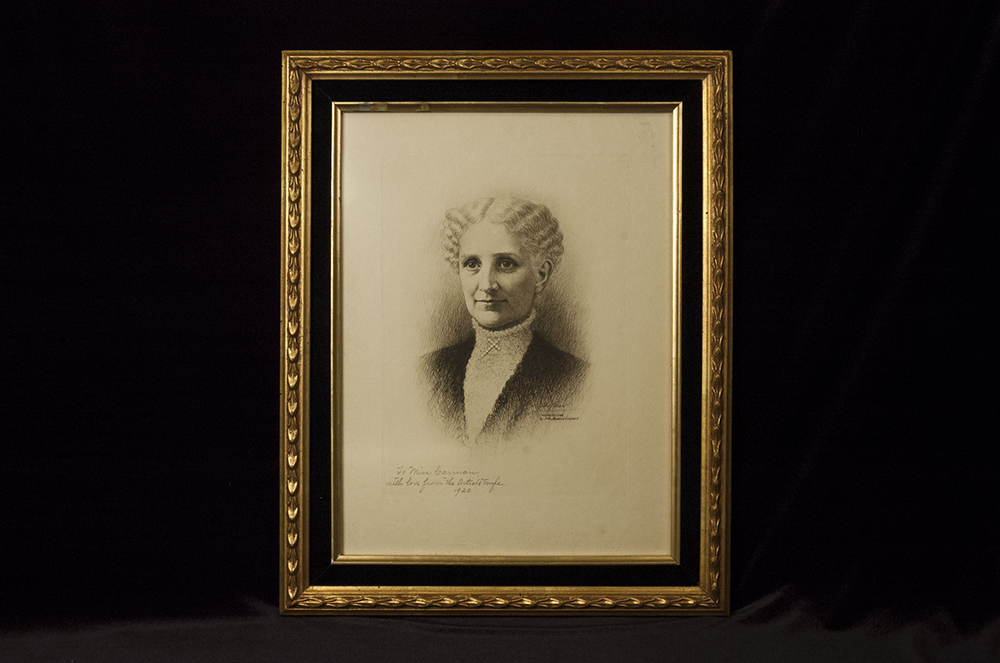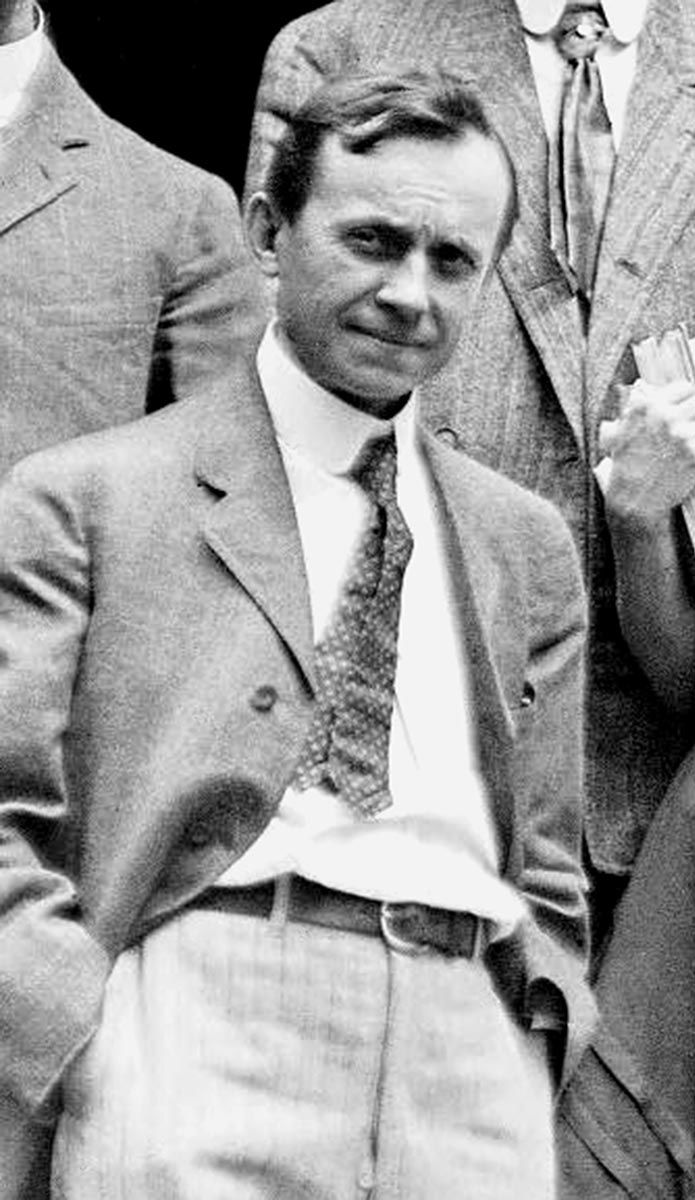In 2015, Longyear Museum received a striking portrait of Mary Baker Eddy by artist Jules Maurice Gaspard—a steel engraving created in 1908. While not the first example of Gaspard’s portrait of Mrs. Eddy in Longyear’s collection, this particular print is unique, thanks to the inscription on it from the artist’s wife, Ermina, to a “Miss Carman.” This generous gift provides the perfect opportunity to tell the story behind the making of the portrait, and of the integrity of the artist.

This likeness of Mary Baker Eddy has a novel history. While it eventually became the frontispiece for her book Science and Health with Key to the Scriptures, among other publications,1 this was not its original intent. How the portrait came to grace the pages of Mrs. Eddy’s writings makes for an interesting tale.
Born in France, Jules Maurice Gaspard immigrated to the United States with his parents as a child in 1868. The family settled in Davenport, Iowa, where young Jules attended school and learned the printing trade. In his late teens, he moved to New York City and supported himself as a job compositor for newspapers while studying at the Art Students’ League and the Gotham Art Students’ Society. In 1891, he headed West again, to Chicago this time, where he became an illustrator at the Chicago Times, and then art critic and later manager of the art department at the Chicago Daily Inter-Ocean. During this period, he also contributed a number of sketches to The Inland Printer. Regarded as an illustrator and artist of some distinction, Mr. Gaspard was particularly known for his pen and ink portraiture.

A profile in the “Art Notes” column of the Daily Inter-Ocean for Sunday, October 11, 1896, offers some insight into Gaspard’s artistry:
His work is not only strongly original in style, but is equally remarkable for the strange dual quality of fineness and vigor. He is not given to sacrificing truth for ideality in portraits, and makes the picture speak for itself…. Technically, he possesses a peculiarly strong, continuous line … free from hardness and the mechanical touch so frequently associated with penwork…. His pen appears to have the feeling of the painter’s brush in its breadth and sureness of touch, and is remarkable in its grasp on facial character.
By 1908, Gaspard found himself working for Elbert Hubbard of the Roycroft Press2 in East Aurora, New York. He was commissioned to produce portrait heads for the frontispieces for Hubbard’s Little Journeys series “Homes of Great Teachers.” Mrs. Eddy was to be included in the group. According to a co-worker of Gaspard, it was “a work much to his liking, as he was a Christian Scientist. He gave the best that was in him to the task.”3
Not only was this task to Gaspard’s liking, but he was also pleased with the resulting portrait. So were his fellow artists at Roycroft, who encouraged him to travel to New England and share the portrait with Mrs. Eddy. Little did Gaspard know, however, that trouble lurked at the next turn. He had not yet seen the manuscript or the proofs of the Little Journey book when he made his trip, and on his return he received an advance proof. He found the biography objectionable—so much so that he refused to allow his portrait of Mrs. Eddy to appear in the book. Hubbard, the author, informed Gaspard that since he was under contract to produce the portrait, it would be printed as planned. The men parted for the evening at a seemingly irreconcilable impasse, each certain of his own position.
Overnight, however, Hubbard had a change of heart. “I think I have written a fair and square Little Journey about Mrs. Eddy,” he said to Gaspard. “You think not. I know you well enough to know you are sincere…. I don’t want to cross wires with your beliefs or to make you unhappy. Therefore I have concluded to surrender this portrait to you.”4
The book went forward, but with a different portrait of Mary Baker Eddy. Meanwhile, this letter from Gaspard to Mrs. Eddy, reprinted in the October 10, 1908, issue of the Christian Science Sentinel, reveals the unexpected conclusion to the tale:
Beloved Leader: – Through Mr. Dickey5 I have just received notice of your favorable judgment of my drawing, and the request for permission to use the portrait in Science and Health. Surely this is a splendid crown for my effort, and I am at loss how to express my satisfaction in this unlooked-for result of my work.
Although the drawing was not made with this end in view, you have recognized in it a labor of love. The desire and purpose to make as good a portrait as I could, have indeed been mine ever since my recognition of the truth and beauty of Christian Science and of its bounty and benefit to me; so that, in a small measure at least, this drawing testifies to my gratitude and love.
Devotedly yours, JULES MAURICE GASPARD.
Gaspard’s portrait was included in printings of Science and Health from 1908 to 1910, until Mrs. Eddy requested there be no more images of her as frontispieces in her writings. A “splendid crown” for the artist’s effort—and his integrity—indeed.